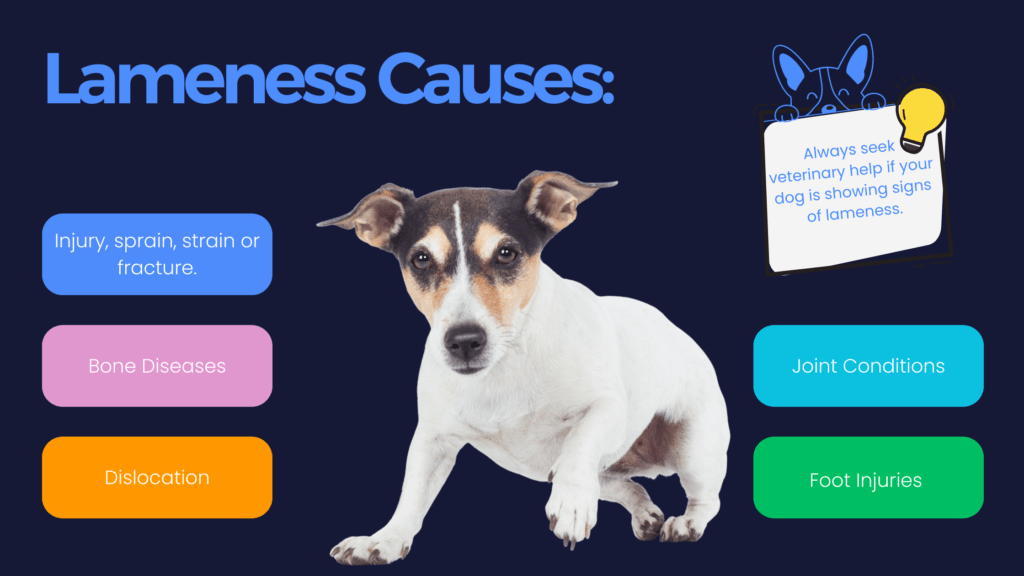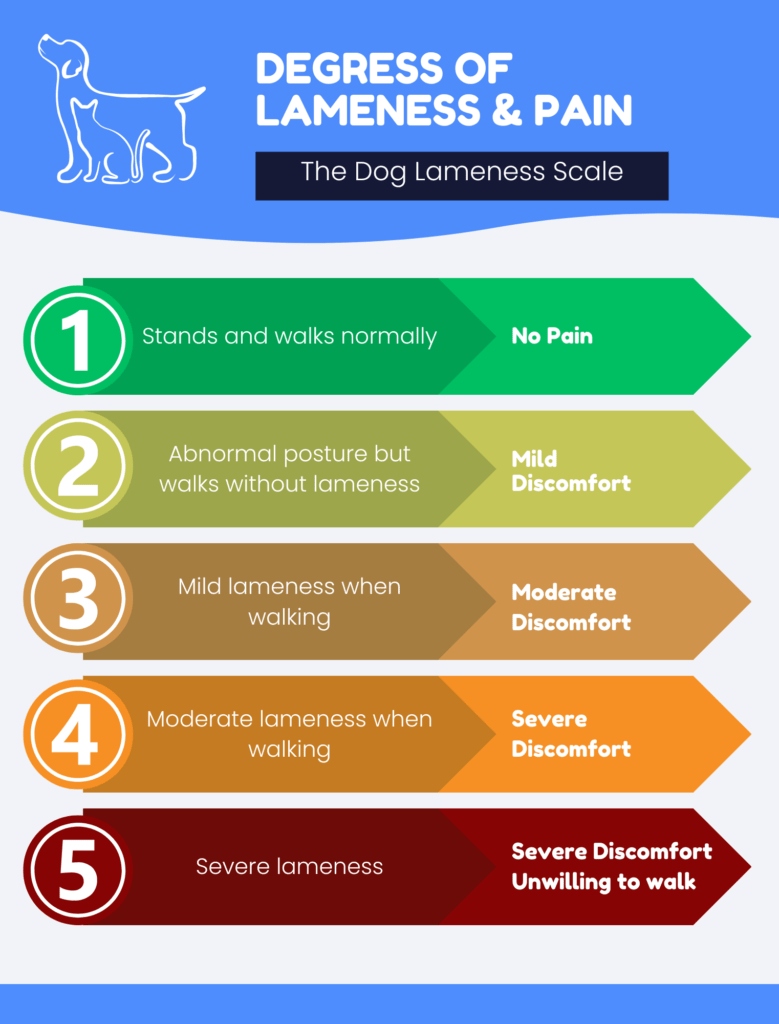
Is your dog stiff, wobbly, or weak on their legs? This could be a sign of lameness. Lameness in dogs is not a disease, however, it is a sign of a painful condition, such as arthritis, a broken bone, or a sprained or ruptured ligament.
What is lameness in dogs?
Lame means the inability to use one or more limbs properly. It is often associated with pain or injury. The most common causes of acute or sudden limping in dogs are soft tissue injury (muscle strain or sprain), joint trauma, fracture, or dislocation. Osteoarthritis and hip dysplasia can also cause lameness in dogs. Lameness can affect dogs of all ages, from growing puppies to older dogs.
Dog lameness can also be acute or chronic. Your pet may experience an acute limp if it begins to hobble. Meanwhile, chronic lameness can occur if your dog limps continuously. This limp can last for two weeks or longer. Recurrent limping may also occur.
What causes lameness in dogs?

Lameness in dogs can stem from a variety of causes, with several issues being more severe than others. Common causes for dog lameness include the following:
- Foot Injuries – Limping can be a sign of an injury to your dog’s foot. For example, small objects like glass or thorns could puncture the foot and make your pet hobble, especially if the wound becomes infected.
- Joint Conditions – Like their owners, dogs can also be diagnosed with joint conditions. Many of these disorders can damage a dog’s joints and musculoskeletal system over time, possibly causing chronic or recurrent lameness.
- Bone Diseases – Your pet may also experience lameness due to a bone disorder. Bone conditions that can change the way your dog walks include hypertrophic osteodystrophy and panosteitis. Besides typical bone diseases, several forms of cancer can appear in your dog’s bones. Osteosarcoma is one such condition – the abnormal production of bone cells that form this tumor. In cases like these, early diagnosis is essential. Have your furry friend check in after you notice any limp or decrease in performance or activity.
- Injuries or Trauma – Injury and trauma are the most obvious causes of lameness in dogs.
Signs of Lameness in Dogs
- Pain when walking
- Swelling of the limb(s)
- Loss of muscle mass
- Obvious break dislocation
- Unusual posture when standing, sitting, or lying down
- Dragging of scruffing paws.
- Unbalanced and falling over.
- Reluctance to exercise or perform normal activities such as climbing the stairs or jumping on the sofa.
dog limping on the front leg?
If your dog is suffering from forelimb lameness, it’s likely their head will rise when weight is placed on the affected leg and go down when they put their healthy leg on the ground. The hind legs may appear tucked under, and the back arched, and dogs suffering front leg lameness may also take shorter than normal strides with their hind limbs.
dog limping on the Back leg?
It’s more difficult to spot hind leg lameness. Signs include the tail rising as the lame leg contacts the ground and the hip on the unaffected side appearing lower than its opposite number. The hip on the lame side may also have an increased vertical motion. With longer-term back leg lameness, muscle wastage around the hindquarters may be visible.
Diagnosing the cause of lameness in your dog
We will conduct a complete physical exam, including a gait analysis. Depending on the severity of the dog’s injury, your veterinarian may observe them resting, standing, walking, and trotting. Other diagnostic tests, such as blood and urine samples, may be required.
In more serious cases, we may also use imaging techniques such as X-rays to try to diagnose the problem.
We often use what’s known as the lameness scale to determine the degree of lameness. Dogs suffering from grade 4 or 5 lameness require urgent veterinary treatment. It’s worth noting that sedation may be necessary for particular tests or for moderate discomfort, to enable a thorough examination.

Preventing lameness in dogs
Prevention of lameness is not always possible, however, there are several risk factors to be aware of, these include your dog’s breed. Some of the ailments and muscular diseases that can cause lameness are passed from generation to generation. Frequent vigorous activity may as contribute to lameness, as does your dog’s weight. Overweight dogs are at high risk to developing some of the conditions that can lead to lameness.
When to seek veterinary attention?
If your dog finds it difficult to lay down, or is stiff in the morning, stiff after a long walk and struggling to get up these are all signs of lameness, as well as the more noticeable signs of not wanting to put their paw down and limping.
Thank you for reading, until next time…
